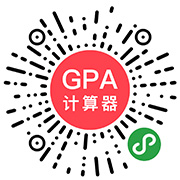据留学360介绍,GMAT阅读部分的常见题型有哪些呢?考生在面对GMAT阅读考试时需要掌握哪些解题技巧呢?以下将对GMAT阅读考试的常见题型及解题技巧进行深入细致的分析,希望能够为同学们备考GMAT阅读带来帮助。
关于文章的风格和基调(态度题)
态度题主要涉及文章使用的语言和作者通过这些语言所表达出的态度。
态度题可能要求你从作者的态度演绎出一个观点,一个事实,或者一个情形;也可能要求你选择一个准确描述文章基调的词语——例如,“批评”,“质疑”,“客观”,或者“满腔热情”。要回答这类问题,你必须把文章看作一个整体——文章通常使用好几个尖锐的批评词汇就会铸就整篇文章的“批评”基调。
例:Cartier-Bresson has expressed his passion forportrait photography by characterizing it as“a duel without rules, a delicaterape.”Such metaphors contrast quite sharply with Richard Avedon’s conception ofa sitting. While Cartier-Bresson reveals himself as an interloper andopportunist, Avedon confesses---perhaps uncomfortably---to a role asdiagnostician and (by implication) psychic healer: not as someone whonecessarily transforms his subjects, but as someone who reveals their essentialnature.
The author of thepassage quotes Cartier-Bresson in order to
(A) refute Avedon’sconception of a portrait sitting
(B) provide oneperspective of the portraiture encounter
(C) support the claimthat portrait sittings are, more often than not, confrontational encounters
(D) show that aportraiture encounter can be either brief or extended
(E) distinguish asitting for a photographic portrait from a sitting for a painted portrait.
在文中,作者指出了Cartier-Bresson的观点与Avedon观点不同,因而我们可以从文中提供的两种观点来判定出本题的正确选项为(B),作者援引Cartier-Bresson的目的是为了引出有关创作肖像作品时的另外一种“画者与被画者”之间新的互动观点。
态度题我们只需在阅读时把握作者对他所叙述的事物或人是正面还是负面态度,至于具体是极力鞭挞、双手赞成还是略加保留,都不用太加留意,只是有时作者态度复杂,正负都有(多是一种为主,另一种以让步的形式在文中出现)。这类考题亦与文章结构有十分紧密的关系。从态度词入手一般比较短平快。正如rakesun网友的总结所说,GMAT里就没用过极端的词,大家甚至可以在明白作者基本态度(褒或贬)的基础上,随便选一个温和的褒或贬的词90%以上是对的。
一、按选项中态度词来筛选:
第一类、慎重选择(通常不选)
a,中庸(无态度),例如:indifferent,ambivalent,resigned,light-hearted,detached,factious,neutral,disinterested,impartial
b,攻击,例如:condemnation,indigent,envious,cynical,spiteful
c,表示绝对的,例如:complete,entire,total,absolute,unrestricted,unchecked
d,热情,例如:fanatical,fervent,adulatory
第二类 常选词
qualified,guarded,tempered,partial,reluctant,limited,incomplete
第三类 极端词(不太可能为正确选项)
a.过褒:adulatory (拍马屁),fervent(炙热的),fanatical(狂热的)
b.过贬:angry, envious(嫉恨的),indignant(愤恨的),insincere (虚假/不真实的),ironic, dogmatic(教条的),condemnation(强烈谴责),derision(嘲弄),defiance(蔑视),scornful(鄙夷),cynical(愤世嫉俗),spiteful(痛恨的), callous(无情的),offensive, reproach, stilted(僵硬的)
c. 过淡:indifference, resigned (听由天命),detached(超然),neutrality, light-hearted(无忧无虑的),jocular=factious(诙谐滑稽的),amusement, ambivalence(有矛盾心理的),tender, ambiguous(模棱两可)
二、按文章中的态度词来选,这个方法还可适用于主旨题
--负态度
*Verb:
fail to, ignore,overlook, neglect, overestimate, underestimate, exaggerate, misrepresent,misinterpret, obscure, reexamine, reinterpret, reconsider, should be expanded,can not explain, based only on…, awaits further study, remain to beanswered, remain unresolved
*Adj./Adv.:
Curiously,problematic, disappointed, inadequate, imprecise, unwarranted, premature,untenable(站不住脚的),unhappily, unfortunately,(表遗憾),unreliable, negligible, not the wholeexplanation, no reason to do, be careful about=be wary of , not adequate,undermined, not yet…researched/studied/explored, unworthy, aridly(沉闷地,无趣地),woefully(悲伤地, 不幸地),disappointed,inadequate, imprecise, unwarranted, premature, fanciful=fantastic (稀奇古怪的), cavalier(傲慢的),discouraging,disproved, misleading, problematic, unpleasant, shocking, misplaced,erroneously, impractical, willy-nilly(不管愿意不愿意,不容分辨的),unreliable, unconvincing, dubious(可疑的, 不确定的), unclear,weak, curiously, precipitously(急躁地,突然地), na?ve, puzzling, deficient(缺乏的, 不足的, 不完善的), curse,bitter, careless
*Noun:
Omission, critique, rush,litter value, revision, disagreement, danger
**虚拟语气:
Would be+正态度词,would havefurther strengthened
*引号
负评价(/引用/强调)
-正态度词
* Verb: prove,confirm, benefit, support, impressed with, make it possible
* Adj./Adv.: cogent,valid, exciting, rightly, enlightening, pioneering, feasible, successful,valuable
* Noun: success, oneway out of dilemma
***注意:significant,ideal—中性词
以上针对GMAT阅读考试的常见题型及解题技巧进行了深入细致的分析和讲解,考生可据此作为参考,通过大量练习来逐步掌握GMAT阅读题型的解题方法,并灵活运用在考试当中,从而成功突围GMAT考试。预祝各位考生考试顺利!









 大马U.S.News排名
大马U.S.News排名 2022大马QS排名
2022大马QS排名 马来西亚QS亚洲排名
马来西亚QS亚洲排名 高考后留学美国
高考后留学美国






 香港大学
香港大学 香港中文大学
香港中文大学 香港科技大学
香港科技大学 香港理工大学
香港理工大学 香港城市大学
香港城市大学 香港浸会大学
香港浸会大学

